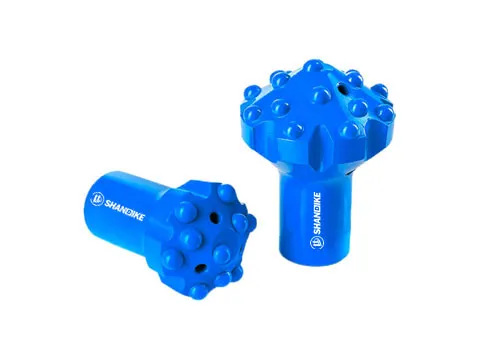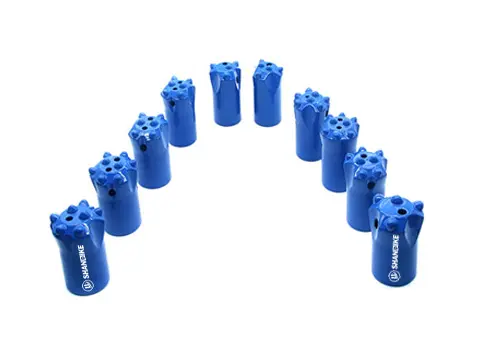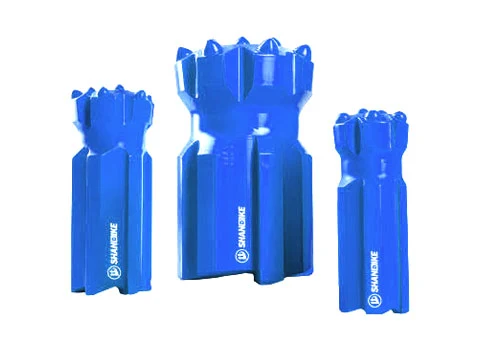DTH (Down-The-Hole) bits are critical components in percussive drilling systems, designed to withstand intense impact and abrasion while efficiently crushing rock. They are primarily classified based onbit face profile,button shape/layout, andspecific design features. Here’s a breakdown of the main types:
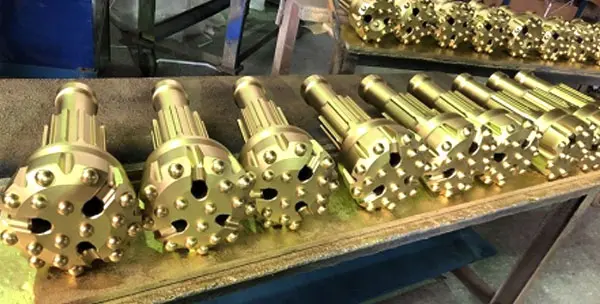
1. By Bit Face Profile (Primary Classification):
Concave (Dish-Shaped):
Description: The face curves inward like a shallow dish.
Advantages: Excellent rock penetration in soft to medium-hard formations. Good cuttings removal due to the shape directing cuttings outward. Generally good life in softer rock.
Disadvantages: Can be prone to hole deviation in harder rock or uneven formations. Less stable than convex bits. Buttons wear faster on the outer edge.
Best For: Soft to medium-hard, non-abrasive rock (e.g., limestone, shale, coal).
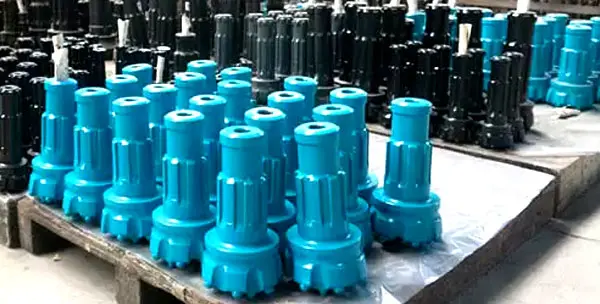
Convex (Dome-Shaped):
Description: The face curves outward like a dome or hemisphere.
Advantages: Superior stability and straighter hole drilling. Excellent performance in medium-hard to very hard and abrasive rock. Buttons wear more evenly across the face. Resists deviation better.
Disadvantages: Slightly lower penetration rate in very soft rock compared to concave. Can sometimes pack cuttings more easily if flushing isn’t optimal.
Best For: Medium-hard to very hard and abrasive rock (e.g., granite, basalt, gneiss, hard quartzite). Most versatile and commonly used profile today.
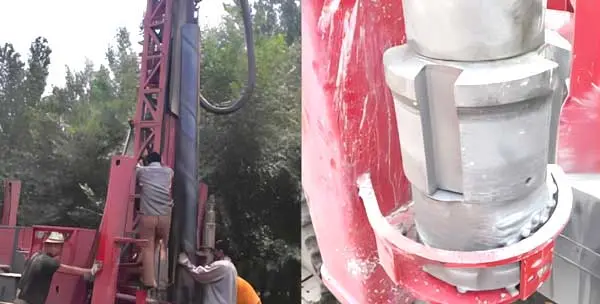
Flat Face:
Description: The face is essentially flat or very slightly curved.
Advantages: Very robust design, good for extremely hard, massive rock. Simple design.
Disadvantages: Lowest penetration rates among profiles. Prone to “balling” (cuttings packing) if flushing isn’t excellent. Can experience higher wear rates due to full face contact.
Best For: Extremely hard, non-fractured, and non-abrasive rock formations (less common than convex/concave).
2. By Button Shape & Function:
Spherical (Ball) Buttons:
Description: Hemispherical-shaped tungsten carbide inserts.
Advantages: Excellent all-around performance and wear resistance. Good for a wide range of rock hardnesses.
Best For: General purpose drilling, especially medium-hard rock. Often used on gauge and in the center.
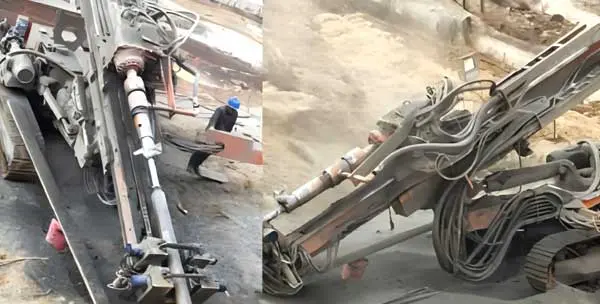
Ballistic (Parabolic) Buttons:
Description: A flatter, wider profile than spherical buttons, resembling a parabola.
Advantages: Larger contact area distributes impact force better, increasing fracture propagation in hard rock. Excellent wear resistance.
Best For: Hard to very hard, abrasive rock. Increasingly popular, often replacing spherical buttons in demanding applications.
Conical (Chisel) Buttons:
Description: Tapered, cone-shaped tungsten carbide inserts.
Advantages: Aggressive cutting action, high penetration rates in soft to medium rock. Concentrates force effectively.
Disadvantages: More prone to breakage and wear in hard/abrasive rock than spherical/ballistic buttons. Can shatter if rock is fractured.
Best For: Soft to medium-hard, non-abrasive rock where high ROP (Rate of Penetration) is critical.
Gauge Buttons:
Description: Buttons specifically placed around the outer edge (gauge) of the bit. Often slightly larger diameter and/or made of a more wear-resistant carbide grade. Can be spherical, ballistic, or sometimes conical.
Function: Critical for maintaining hole diameter and protecting the bit body from wear against the borehole wall. Failure here causes “undergauge” holes.
Front/Inner Buttons:
Description: Buttons covering the main face and center of the bit. Their shape, size, and pattern are optimized for rock fracturing and penetration.
Function: Perform the primary rock-breaking work.
Center Buttons:
Description: Buttons placed in the very center of the bit face.
Function: Stabilize the bit, prevent “center wear” (which leads to loss of penetration and button breakage), and initiate fracturing in the middle of the hole.
3. By Specific Design Features & Applications:
Standard DTH Bits: The most common type, designed for conventional rock drilling with compressed air.
Water Hammer Bits: Specifically designed to operate with water instead of air as the flushing medium (used in environmentally sensitive areas or where air is impractical). Have larger or more numerous flushing holes.
Blind Bits: Have a solid center with no central flushing hole. Used in specific applications like starting holes or drilling through overburden where central flushing might cause problems.
Retrac Bits: Feature a mechanism (like spring-loaded gauge buttons) designed to help retract the bit if it gets stuck, minimizing costly fishing operations. Crucial in unstable ground.
Cop Bits (COP Hammers): Specifically designed for use with Atlas Copco’s COP series hammers, often featuring a unique shank design.
High-Pressure Bits: Engineered to withstand the extreme pressures generated by large, high-power DTH hammers.
Special Material Bits: Bits using premium grades of tungsten carbide or specialized carbide blends for extreme abrasion or impact resistance.
Key Material & Construction:
Body: High-strength alloy steel.
Buttons/Inserts: Tungsten carbide (WC), typically with a Cobalt (Co) binder. The specific carbide grade (grain size, binder %, additives) determines hardness vs. toughness.
Shank: Precision-machined to fit securely into the hammer chuck.
Choosing the Right Bit:
The optimal DTH bit depends on:
1. Rock Type & Hardness: The most critical factor (determines profile & button shape).
2. Abrasiveness: Affects carbide grade choice and wear protection design.
3. Drilling Hammer: Size, power, and chuck type dictate bit size and shank design.
4. Drilling Parameters: Air pressure/volume, rotation speed, feed pressure.
5. Hole Size & Depth: Bit diameter and flushing efficiency.
6. Desired Penetration Rate vs. Bit Life: Often a trade-off (e.g., aggressive conical bits drill fast but wear faster in hard rock).
7. Ground Conditions: Stable vs. fractured/unstable (influences need for retrac features, gauge protection).
